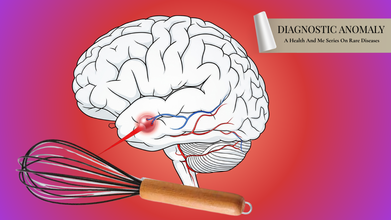- Health Conditions A-Z
- Health & Wellness
- Nutrition
- Fitness
- Health News
- Ayurveda
- Videos
- Medicine A-Z
- Parenting
- Web Stories
These Food Items Can Lower Risk Of Erectile Dysfunction

Erectile Dysfunction (Credit:Canva)
The foods you eat provide the building blocks you need to power your body, including the penis and other reproductive organs. Research has shown that eating a nutritious, well balanced diet decreases the risk of getting an erectile dysfunction. For the uninitiated, erectile dysfunction is the inability to get or maintain an erection that's firm enough for sexual intercourse and it si a very common condition in men worldwide.
Here Are Foods That Enhance Men's Sexual Health
1. Spinach
Spinach is a powerhouse of folate, a B-vitamin known to boost blood flow—a crucial factor in male sexual function. Studies have shown that low folic acid levels increases risk of erectile dysfunction. Notably, just one single cup of boiled spinach provides 66% of the daily recommended value for folate. In addition, spinach is rich in magnesium, a mineral that promotes blood circulation and has been associated with a reduced risk of erectile dysfunction.
2. Caffeine
Caffeine's role in preventing erectile dysfunction has shown mixed results in research. A 2014 study involving over 3,000 men found that those consuming moderate daily caffeine (85–300 mg) were less likely to report erectile dysfunction. However, a 2024 meta-analysis including over 51,000 participants found no significant link between caffeine intake and erectile dysfunction, indicating more research is needed.
3. Apples
Apples are rich in flavonoids, which offer several health benefits including improved sexual health. A 2016 review highlighted that apples are among the top sources of anthocyanins, flavones, and flavanones—compounds linked to a 19% lower risk of erectile dysfunction.
Moreover, apple peels contain ursolic acid, a compound that may inhibit the growth of prostate cancer cells, as suggested by a 2017 test-tube study.
4. Avocados
Known for their creamy texture and nutrient density, avocados are rich in vitamin E and zinc—nutrients essential for sperm quality and testosterone production. A 2024 review noted that avocados might improve sexual duration, manage premature ejaculation, and enhance sexual satisfaction.
5. Chile Peppers
Spice lovers may gain a surprising benefit. A 2015 study found that men who enjoyed spicier foods had higher testosterone levels in their saliva. While this doesn’t confirm that spicy foods directly boost testosterone, capsaicin, the compound in chile peppers, may stimulate pleasure centers in the brain, potentially acting as an aphrodisiac.
6. Carrots
Carrots are celebrated for their carotenoid content, which supports testosterone production, sperm count, and motility. These sexual health benefits may also stem from the antioxidants, flavonoids, vitamins, and minerals found in this versatile vegetable.
7. Oats
Oatmeal might not seem like a traditional aphrodisiac, but it contains L-arginine, an amino acid believed to relax blood vessels and improve blood flow to the penis. While a 2018 review suggests L-arginine’s effects may be limited, oats are still considered beneficial for boosting libido and testosterone levels.
8. Tomatoes
Packed with antioxidants like lycopene, tomatoes support sexual health, fertility, and prostate health. A 2024 review found that lower lycopene intake correlated with a higher risk of erectile dysfunction. Previously, a 2017 study showed that drinking tomato juice for 12 weeks improved semen quality and sperm motility in participants with infertility.
Is Holding A Grudge Only A Woman's Problem? Science Explains The Gender Difference

(Credit-Canva)
The phrase, “hell hath no fury like a woman scorned” may hold more truth than we led on. Women are always thought of as the less aggressive, more forgiving and expected to be more rational than men. However, how much of that is a biological factor and how much of it is societal expectation?
While many people believe women are more forgiving, the results of many studies suggest otherwise. This 1997 research, which was published in the Proceedings of the National Academy of Sciences (PNAS) USA, compared men and women to see if there were differences in how they forgive. The study looked at how forgiving people are in general, as well as how they forgive themselves, others, and situations they can’t control.
Why Women Hold More Grudges
The study, which included 625 people (mostly women), found that men were more forgiving overall than women. Men also showed a greater willingness to move past feelings of unforgiveness. However, when it came to the more positive aspects of forgiveness, like being accepting and compassionate, there was no major difference between the genders.
Both men and women in the study showed similar emotional patterns related to forgiveness. Things like negative emotions, anxiety, and holding in anger were all linked to being less forgiving. On the other hand, positive emotions were linked to being more forgiving. An interesting difference was seen with anxiety control: for women, controlling their anxiety was linked to being less forgiving, but for men, it was linked to being more forgiving.
How Emotions and Gender Affect Forgiveness
The study found that a person's gender can change the way certain emotions are connected to forgiveness. This was especially true for forgiving oneself and forgiving situations that are out of one's control. Forgiveness of others, however, was not significantly affected by these gender differences. This suggests that while everyone's emotions play a role in forgiveness, gender can influence how those emotions shape our ability to let go of certain types of hurt.

Are Men More Forgiving Than Women?
Another 2021 study, published in the Journal of Religion and Health, on average, men were more forgiving than women, especially when it came to overcoming feelings of unforgiveness toward themselves and situations they couldn't control. However, there was no significant difference in the more positive aspects of forgiveness, such as a compassionate mindset.
- The research also found a link between emotions and forgiveness for both genders:
- Negative emotions, like sadness, anxiety, and anger, made it harder for people to be forgiving.
- Positive emotions were associated with being more forgiving.
An interesting finding was how controlling emotions affected men and women differently. For women, trying to control their anxiety was linked to being less forgiving. For men, controlling their anxiety was actually linked to being more forgiving, particularly of themselves and difficult situations.
How Does Serotonin Affect Your Brain?
According to a study published in the Biological Psychiatry, the study showed that when serotonin was low, the connection between two key brain areas became weaker. To find this, researchers adjusted the diets of healthy volunteers to lower their serotonin levels. Using an fMRI brain scan, they observed how the volunteers' brains reacted to faces showing angry, sad, or neutral expressions. They found that these 2 areas of the brain became weak,
- The amygdala, which is the emotional part of the brain that creates feelings of anger.
- The prefrontal cortex, which is the part that helps us regulate and control our emotions.
- This suggests that with low serotonin, it's harder for the prefrontal cortex to manage the anger signals coming from the amygdala. This can make a person more likely to act aggressively.
Why Some People Are More Prone to Aggression
The researchers also gave the volunteers a personality test to see who had a natural tendency toward aggression. They found that in these individuals, the link between the amygdala and the prefrontal cortex was even weaker when serotonin was low. This means that people who are already more prone to aggression are the most sensitive to drops in serotonin, which makes it even harder for them to control their angry feelings.
These findings highlight that while everyone's emotions play a role in forgiveness, gender can influence how those emotions shape a person's ability to let go of certain types of hurt.
Miriam Margolyes, Harry Potter Star Shares Honest Health Update 'I've Let My Body Down'

Actress Miriam Margolyes, known for her role as Professor Sprout in the Harry Potter films, recently spoke openly about her health issues. In a new interview, the 84-year-old admitted her lifestyle has taken a toll on her body, which she links to a lifelong struggle with her weight.
When asked about using Ozempic for weight loss, Margolyes firmly rejected the idea, stating, "That’s for diabetics. You shouldn’t take medicine meant for people who are really sick."
Her health struggles have also led to her considering her own mortality. After a recent heart procedure, she shared that she knows she "doesn’t have long left to live," likely within the next five to six years. Despite this, she expressed a strong desire to continue performing, even though she isn't "strong enough" for roles that don't involve a wheelchair.
Miriam Margolyes Health
In May 2023, Margolyes was hospitalized with a chest infection and underwent a heart procedure. She later updated fans on social media, thanking them for their support.
The procedure she had was a Transcatheter Aortic Valve Implantation (TAVI), a less invasive alternative to open-heart surgery. On a podcast, she explained that she had an aortic valve replaced with one from a cow. "I’ve got a cow’s heart now," she joked. "I’d never heard of that operation, but it saves you from having open heart surgery."
Beyond her heart issues, Margolyes has also been diagnosed with spinal stenosis, a condition that causes chronic pain and makes it difficult for her to walk. She has registered as disabled and uses a walker and sticks, though she recently got a mobility scooter, which she called "a lot of fun."
Could Heart Health Issues Be Avoided With Exercise?
"I’ve let my body down," she said. "I haven’t taken care of it. I have to walk with a walker now. I wish I’d done exercise." Miriam admitted in the magazine interview. According to the National Institute on Aging, being physically active is pertinent for one’s health.
As you get older, your heart and blood vessels naturally change. While your resting heart rate usually stays the same, your heart may not be able to beat as fast as it used to during exercise or stressful situations.
As you get older, it's not unusual to feel your heart flutter or skip a beat from time to time. Most of the time, this is nothing to worry about. But if you feel like your heart is fluttering or racing very often, or if the feeling doesn't go away, it could be a sign of a heart rhythm problem called an arrhythmia. If this happens, it's a good idea to talk to a doctor, as it might need treatment.
How Does Aging Change Your Heart?
With age, your heart’s size and structure can change. The walls of your heart can get thicker, and its chambers can become bigger. This can make it harder for the heart to hold as much blood as it used to. A thicker heart wall also raises the risk for a common heart rhythm issue called atrial fibrillation, which can increase the chance of having a stroke.
The heart’s valves, which open and close to control blood flow, can also get stiffer and thicker. This can slow down or block the blood flow out of your heart, or they can become leaky. When this happens, fluid can start to build up in your lungs, legs, and feet.
How to Protect Your Heart and Brain
The natural changes in your heart that come with age can increase your risk of heart disease, which can limit your daily activities. It’s also interesting to know that many of the things that are bad for your heart are also bad for your brain. For example, high blood pressure can increase your risk of both heart disease and dementia later in life.
The good news is that you can take steps to protect both. By managing your blood pressure and taking good care of your heart, you are also helping to protect your brain and improve your overall well-being as you get older.
Diagnostic Anomaly: Woman Dies During Orgasm After Rare Aneurysm Ruptures In The Brain

Credits: Health and me
A 39-year-old woman in Belgrade, Serbia, died unexpectedly after suffering a massive brain hemorrhage during sexual activity involving a household kitchen tool. The case, published in a forensic medical report, sheds light on how sexual excitement and orgasm can trigger fatal complications in people with undiagnosed brain aneurysms.
Her ex-husband found her body on the living room couch. She was covered by a blanket, naked from the waist down, with a spring whisk partially inserted into her rectum. Police initially suspected foul play, but a forensic investigation ruled out external injuries or violence. The true cause of death was internal — a ruptured “berry aneurysm” in the brain.
Autopsy results revealed a massive subarachnoid hemorrhage bleeding into the space between the brain and its protective membranes. Clotted blood up to 6 millimeters thick surrounded the brainstem and base of the brain. Once clots were cleared, examiners found the source: a saccular aneurysm, more commonly known as a berry aneurysm, measuring 11 millimeters in diameter.
This berry-shaped bulge in an artery wall had ruptured at its dome, releasing blood into the brain. When such aneurysms burst, they can cause sudden, catastrophic pressure on brain tissue, cut off blood flow, and trigger immediate loss of consciousness or death.
In this case, the woman’s known history of hypertension (high blood pressure) made her especially vulnerable. According to experts, her orgasm likely caused a rapid spike in blood pressure that pushed the weakened artery wall beyond its breaking point.
What Role Sexual Activity Play in Fatal Aneurysms?
Sudden death after sexual activity is well-documented but remains rare, especially in women. Studies indicate that physical activity increases blood pressure, and orgasm may increase it even more. In a person with an as-yet undiagnosed aneurysm, this transitory boost can suffice to rupture it.
The forensic investigators determined that her death had resulted from anal self-stimulation with the whisk. While the object itself was not the cause of physical harm, the physiological alterations induced by orgasm were fatal.
Physicians behind the case emphasized that death scene investigation should be complemented by forensic autopsy in order to reconstruct such incidents. Lacking both, the events leading to her untimely death would have been uncertain.
What Is Berry Aneurysm?
A berry aneurysm is the most common type of brain aneurysm, named for its resemblance to a small berry dangling from an artery. These aneurysms develop where arteries branch at the base of the brain, often in the circle of Willis, a critical blood supply network.
Around 3–4% of the general population has a berry aneurysm, though most never rupture. They occur most often between ages 30 and 60, with women over 50 about twice as likely as men to develop them, partly due to declining estrogen levels.
Berry aneurysms can range from tiny, just a few millimeters, to over an inch in size. Larger aneurysms carry a higher risk of rupture. When a rupture occurs, the resulting subarachnoid hemorrhage is fatal in about half of cases, and survivors often suffer permanent neurological damage.
What Are The Symptoms of Berry Aneurysm?
Most berry aneurysms remain asymptomatic until rupture. Occasionally, larger aneurysms press on nearby nerves, causing:
- Pain around the eyes
- Drooping eyelid
- Dilated pupil
- Blurred or double vision
For many, the first sign of a problem is sudden, severe headache often described as “the worst headache of my life.” This can signal a rupture in progress and requires emergency medical attention.
Risk Factors Related to Berry Aneurysm
While some aneurysms are inherited, lifestyle and medical conditions play a significant role:
- Hypertension (high blood pressure)
- Smoking
- Heavy alcohol use
- Certain infections or trauma
- Estrogen deficiency in postmenopausal women
In the Serbian case, the woman’s hypertension created a chronic strain on her blood vessels, predisposing her to aneurysm formation and rupture.
The physiology of orgasm explains why this event turned fatal. Sexual arousal and climax trigger spikes in blood pressure and heart rate. For most people, these changes are safe and transient. But for individuals with fragile blood vessels, such as those with aneurysms, the sudden surge can rupture a weakened artery.
This “double burden” existing hypertension compounded by orgasm-induced pressure likely set the stage for the fatal outcome.
The circumstances may be unusual, but the underlying lesson is universal. Many people live with undiagnosed aneurysms, unaware of the risks. The Brain Aneurysm Foundation estimates that about one in 50 people has a brain aneurysm, but only a fraction will ever experience symptoms before rupture.
Can Aneurysms Be Prevented?
Not all aneurysms can be prevented, but the risks can be significantly reduced through a combination of lifestyle adjustments and proper medical care. Managing blood pressure is a key factor, which can be achieved through a balanced diet, regular exercise, and medication if prescribed by a physician. Avoiding smoking and limiting alcohol consumption also play a crucial role in maintaining vascular health and lowering aneurysm risk.
Regular medical checkups are important, particularly for individuals with a family history of aneurysms or stroke, as early detection can be life-saving. For those diagnosed with an unruptured aneurysm, doctors may recommend careful monitoring, surgical clipping, or endovascular procedures to minimize the risk of rupture and prevent potentially fatal complications.
This woman’s death may appear sensational due to the circumstances, but it highlights a much larger health issue. Aneurysms are often silent until they become catastrophic. When combined with common conditions like hypertension, everyday activities even sex can become unexpectedly dangerous.
As one of the report’s authors noted, the takeaway is not to fear sexual activity, but to recognize the hidden impact of untreated high blood pressure and unrecognized vascular conditions.
© 2024 Bennett, Coleman & Company Limited

